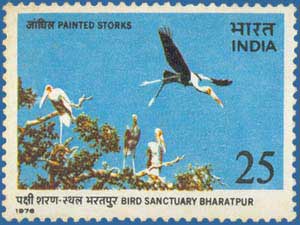
KEOLADEO GHANA BIRD SANCTUARY, BHARATPUR, RAJASTHAN

Keoladeo Ghana Bird, Sanctuary, Bharatpur, Rajasthan is one of the most spectacular water-bird sanctuaries in the world and offers a magnificent display of indigenous breeding birds and winter migrants.
The sub-tropical climate in the sanctuary together with its extensive aquatic vegetation and profusion of trees provide ideal conditions for nesting. Soon after the south-west Monsoon, Indian water- birds like cormorants, darters (snake- birds), spoonbills, white ibises egrets, the grey heron, the painted stork, the open- billed stork begin to nest usually in congested, mixed colonies, on trees partly submerged in water. The nesting colonies are mainly sited in the hundreds of acacia (babul) trees that, dot the marsh.
By the time the north-east monsoon and the winter arrive, these birds have raised several broods and generally reached the end of their strenuous breeding enterprise.
They are now free to fly over to feeding grounds close by or far away.
In winter, migratory birds arrive from regions as distant as Russia (Siberia) and northern Europe by November. The magnificent Siberian crane and a variety of duck, geese, sandpipers, plovers and others descend in vast numbers on the large, shallow sheets of water in Ghana and spend a few months around feeding grounds, wintering with us. They return to their homes in the cold north by the end of February.
Some indigenous water-birds that have completed their breeding enterprise elsewhere in India also migrate to the Ghana Sanctuary. For instance, among the three kinds of pelicans found in the sanctuary in December, the rosy and the Dalmatian pelicans are migrants from outside the country, but the third, the grey pelican, breeds in India itself. The indigenous birds commence their nesting enterprise by mid- September and depart by about March.
In view of the wide range and the large number of water-birds found in the Ghana Bird Sanctuary, the well-known National Audubon Society of U.S.A. has chosen this Sanctuary to hold its Ecology Work shop from February 9 to 11, 1976.
Date of Issue: 10.2.1976